Cell diversity and network dynamics in photosensitive human brain organoids
- PMID: 28445462
- PMCID: PMC5659341
- DOI: 10.1038/nature22047
Cell diversity and network dynamics in photosensitive human brain organoids
Abstract
In vitro models of the developing brain such as three-dimensional brain organoids offer an unprecedented opportunity to study aspects of human brain development and disease. However, the cells generated within organoids and the extent to which they recapitulate the regional complexity, cellular diversity and circuit functionality of the brain remain undefined. Here we analyse gene expression in over 80,000 individual cells isolated from 31 human brain organoids. We find that organoids can generate a broad diversity of cells, which are related to endogenous classes, including cells from the cerebral cortex and the retina. Organoids could be developed over extended periods (more than 9 months), allowing for the establishment of relatively mature features, including the formation of dendritic spines and spontaneously active neuronal networks. Finally, neuronal activity within organoids could be controlled using light stimulation of photosensitive cells, which may offer a way to probe the functionality of human neuronal circuits using physiological sensory stimuli.
Conflict of interest statement
The authors declare no competing financial interests.
Figures
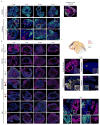
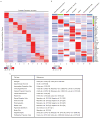
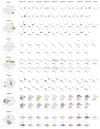
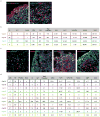

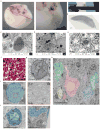


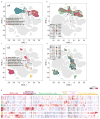
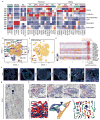
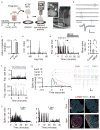
Comment in
-
Human development: Advances in mini-brain technology.Nature. 2017 May 3;545(7652):39-40. doi: 10.1038/545039a. Nature. 2017. PMID: 28470206 No abstract available.
-
Tissue engineering: NIH competition to create 'eye in a dish'.Nature. 2017 Jun 14;546(7658):352. doi: 10.1038/546352b. Nature. 2017. PMID: 28617468 No abstract available.
Similar articles
-
Improved Retinal Organoid Differentiation by Modulating Signaling Pathways Revealed by Comparative Transcriptome Analyses with Development In Vivo.Stem Cell Reports. 2019 Nov 12;13(5):891-905. doi: 10.1016/j.stemcr.2019.09.009. Epub 2019 Oct 17. Stem Cell Reports. 2019. PMID: 31631019 Free PMC article.
-
Cerebral organoids model human brain development and microcephaly.Nature. 2013 Sep 19;501(7467):373-9. doi: 10.1038/nature12517. Epub 2013 Aug 28. Nature. 2013. PMID: 23995685 Free PMC article.
-
Multiscale 3D phenotyping of human cerebral organoids.Sci Rep. 2020 Dec 8;10(1):21487. doi: 10.1038/s41598-020-78130-7. Sci Rep. 2020. PMID: 33293587 Free PMC article.
-
Bioengineering tissue morphogenesis and function in human neural organoids.Semin Cell Dev Biol. 2021 Mar;111:52-59. doi: 10.1016/j.semcdb.2020.05.025. Epub 2020 Jun 12. Semin Cell Dev Biol. 2021. PMID: 32540123 Free PMC article. Review.
-
Taming human brain organoids one cell at a time.Semin Cell Dev Biol. 2021 Mar;111:23-31. doi: 10.1016/j.semcdb.2020.05.022. Epub 2020 Jul 24. Semin Cell Dev Biol. 2021. PMID: 32718852 Free PMC article. Review.
Cited by
-
Human Brain Organoids-on-Chip: Advances, Challenges, and Perspectives for Preclinical Applications.Pharmaceutics. 2022 Oct 26;14(11):2301. doi: 10.3390/pharmaceutics14112301. Pharmaceutics. 2022. PMID: 36365119 Free PMC article. Review.
-
Single-Cell RNA Sequencing in Parkinson's Disease.Biomedicines. 2021 Apr 1;9(4):368. doi: 10.3390/biomedicines9040368. Biomedicines. 2021. PMID: 33916045 Free PMC article. Review.
-
When glia meet induced pluripotent stem cells (iPSCs).Mol Cell Neurosci. 2020 Dec;109:103565. doi: 10.1016/j.mcn.2020.103565. Epub 2020 Oct 14. Mol Cell Neurosci. 2020. PMID: 33068719 Free PMC article. Review.
-
Human Neural Organoid Microphysiological Systems Show the Building Blocks Necessary for Basic Learning and Memory.bioRxiv [Preprint]. 2024 Sep 19:2024.09.17.613333. doi: 10.1101/2024.09.17.613333. bioRxiv. 2024. Update in: Commun Biol. 2025 Aug 16;8(1):1237. doi: 10.1038/s42003-025-08632-5. PMID: 39345518 Free PMC article. Updated. Preprint.
-
Principles for the design of multicellular engineered living systems.APL Bioeng. 2022 Mar 2;6(1):010903. doi: 10.1063/5.0076635. eCollection 2022 Mar. APL Bioeng. 2022. PMID: 35274072 Free PMC article.
References
Publication types
MeSH terms
Grants and funding
LinkOut - more resources
Full Text Sources
Other Literature Sources
Molecular Biology Databases

